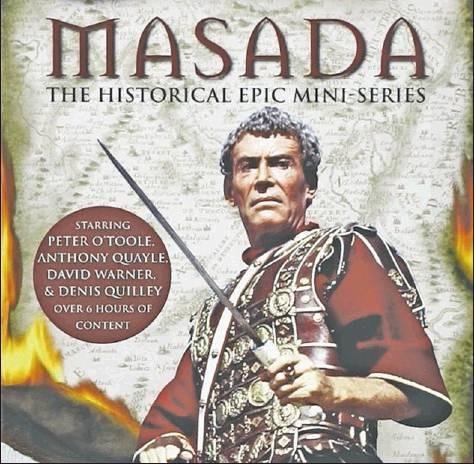The author behind a popular Masada retelling
Chronicle Editor Emeritus Jerry Bellune shares with you his adventures in the Holy Land. The experience gave him a greater appreciation of shared US and Israeli values.
Masada, Judea
…
This item is available in full to subscribers.
Subscribe to continue reading. Already a subscriber? Sign in
Get 50% of all subscriptions for a limited time. Subscribe today.
Please log in to continueNeed an account?
|
The author behind a popular Masada retelling
Chronicle Editor Emeritus Jerry Bellune shares with you his adventures in the Holy Land. The experience gave him a greater appreciation of shared US and Israeli values.
Masada, Judea
You may never have heard of Masada, a mountain fortress in the Judean desert.
My first recollection was Ernest Gann’s “The Antagonists,” a dramatic retelling of the ancient struggle between the Roman legions and Jewish Sicarii rebels.
Gann had to depend on the only existing account of the siege of Masada by the historian Josephus and his own imagination.
In his book, later reissued as “Masada,” and the TV series script he wrote, Gann recounts how 960 rebels held out against 8,000 Romans and up to 7,000 prisoners of war who did the dirty work for 3 years.
Making of an author
Gann’s life is an adventure story in itself. He was born in Nebraska to a railroad executive and his wife.
Gann was a disinterested student with a rebellious spirit. His parents packed him off to military school where he finally graduated despite problems his free spirit created for him.
He was fascinated with movie making and found a job with a film company making a movie about the rise of Nazi Germany.
On location in the Rhineland, Gann and this colleagues barely escaped when the Nazis invaded.
On his return to America, he and actor Burgess Meredith bought a gullwing plane which he learned to fly. That led to a job as an airline pilot and eventually flying for the Army Air Corps over The Hump in Burma, to North Africa, India, Europe, South America and Hawaii.
He began to write action novels based on his experiences. Despite his own self doubt about his ability as a writer, he was surprised with the enthusiastic public reception to his novels.
Sailor and spendthrift
Although he made lots of money as a published writer and movie maker, he was a poor steward of his wealth.
Always in need of money to support his family and his many interests, he began working in the Pacific Northwest fishing industry, even skippering fishing boats he owned. This began a growing fascination with sailing and the sea.
These experiences became the inspiration for a dozen best sellers including “The High and the Mighty,” “Fate Is the Hunter” and “Island in the Sky,” all he turned into major motion pictures.
He bought and sailed boats in many parts of the world. His last, the Sea Puss, was a tugboat.
His sailing became such books and movies as “Twilight for the Gods” and “Soldier of Fortune.”
Making of Masada
The last film project based on one of his best sellers was “Masada,” a four-part series shown on ABC-TV n 1981 starring Peter O’Toole as Roman legion commander Lucius Flavius Silva, Peter Strauss as the Jewish commander Eleazar ben Ya’ir, and Barbara Carrera as Silva’s Jewish mistress.
“Masada” was filmed at the site of the ancient fortress. The temains of a ramp created to simulate the one built by the Romans can still be seen there.
ABC was concerned that the public was unfamiliar with the Masada story and commissioned a 30-minute documentary, “Back To Masada.” In it, O’Toole recounts the history of the Jewish revolt against Rome.
The story was originally published in 1971 as Gann’s “The Antagonists.”
Gann lived his last years at his 800-acre farm in the San Juan Islands in Washington’s Puget Sound.
He had spotted it in a small plane, bought and turned it into a working farm, with cattle and horses including Gann’s Arabian stallion Masada.
He told interviewers that he needed only a few hours sleep a night. He found writing difficult but did it every morning in a chicken coop he converted to a small writing office.
He said he quit promptly at 12:30 as he had many other things to do during the rest of his day.
His last book, “The Black Watch” (1989), was a nonfiction book about the pilots who flew America’s secret spy planes. In his research, he donned a space suit and, with the blessing of the government, flew a U2.
Next: The Romans seek revenge at Masada.
Other items that may interest you







Comments
No comments on this item Please log in to comment by clicking here